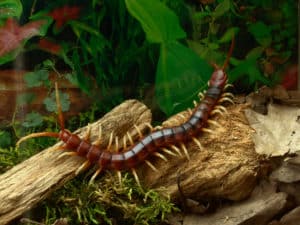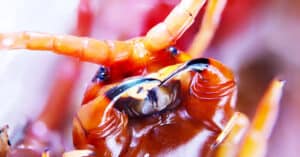The word centipede comes from the Latin words for hundred (centi) and foot (pedis). Centipedes are arthropods that belong to the class Chilopoda in the subphylum Myriapoda, which also contains millipedes. There are over 3,000 known centipede species around the world, and scientists estimate there may be as many as 8,000. Here are 10 incredible centipede facts that explore what makes these creepy crawlies so interesting.
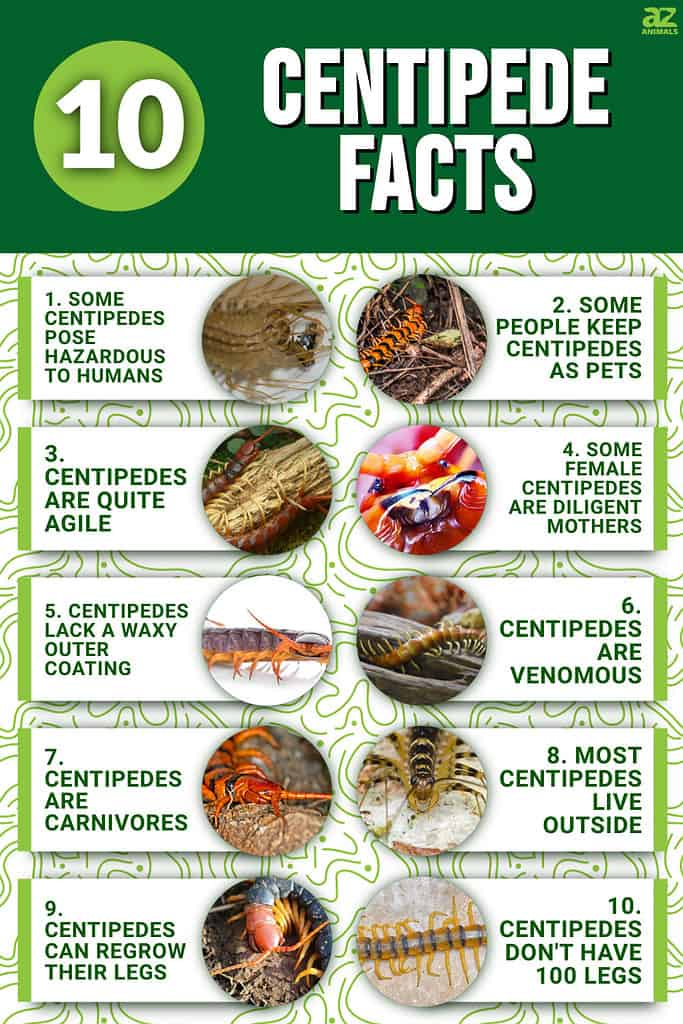
10. Centipedes Don’t Have 100 Legs
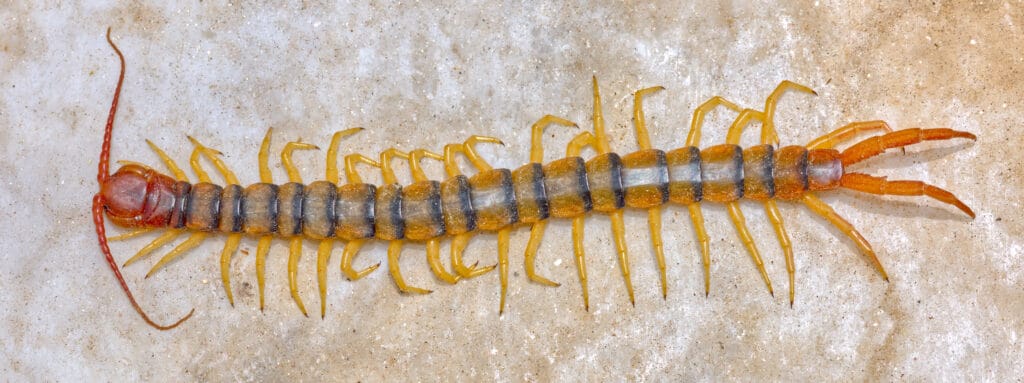
Despite their name, no centipede actually features 100 legs.
©Deep Desert Photography/Shutterstock.com
The first entry on our list of centipede facts is also likely the most surprising. In Latin, the word centipede translates to “one hundred legs.” It’s, therefore, no surprise that most people believe that all centipedes possess 100 legs. However, this name is misleading, as the truth about centipede anatomy is much more complex.
Despite their name, no centipede actually features 100 legs. All centipede species possess an odd number of pairs of legs, with most possessing somewhere between 30 and 382. As a result, no centipede has exactly 100 legs.
9. Centipedes Can Regrow Their Legs
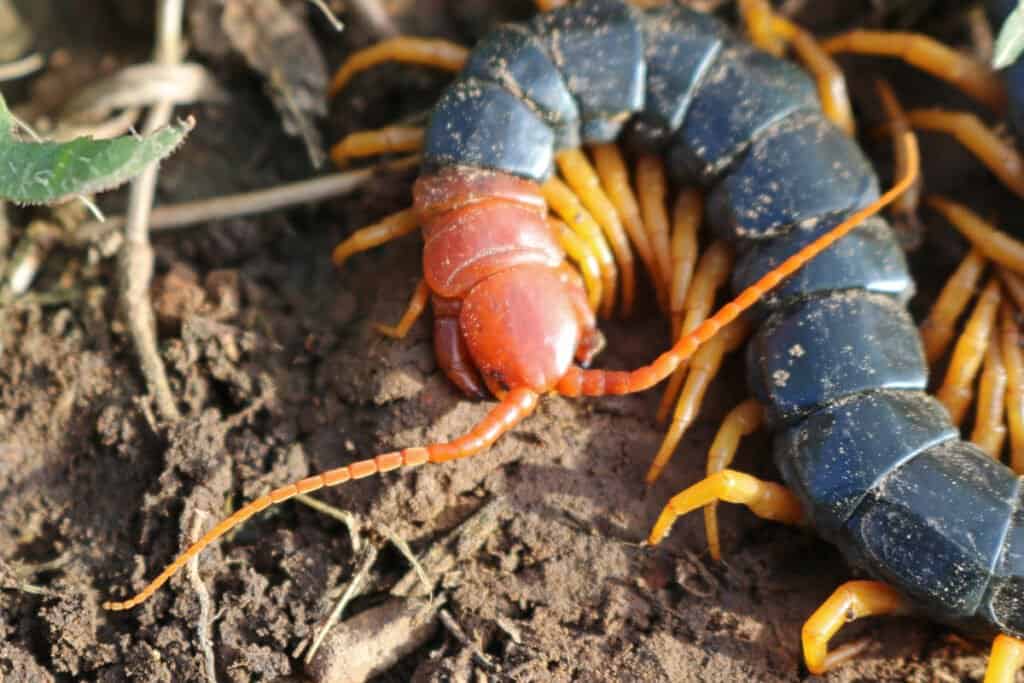
While some centipedes are born with their maximum number of legs, others develop more legs as they molt and grow.
©Creeping Things/Shutterstock.com
Most creatures can’t regrow lost limbs; once a limb is lost, it’s gone forever. However, a few select animals have evolved the unique ability to regrow limbs that they have lost. Salamanders, starfish, and cockroaches are just a few examples of animals that replace lost limbs, and you can add centipedes to that list.
While some centipedes are born with their maximum number of legs, others develop more legs as they molt and grow. Moreover, if a centipede loses some of its legs, such as in a fight or encounter with a predator, the lost legs will regenerate when the centipede molts. The legs may take several molts to regrow fully, but they will return to their standard size in time.
8. Most Centipedes Live Outside
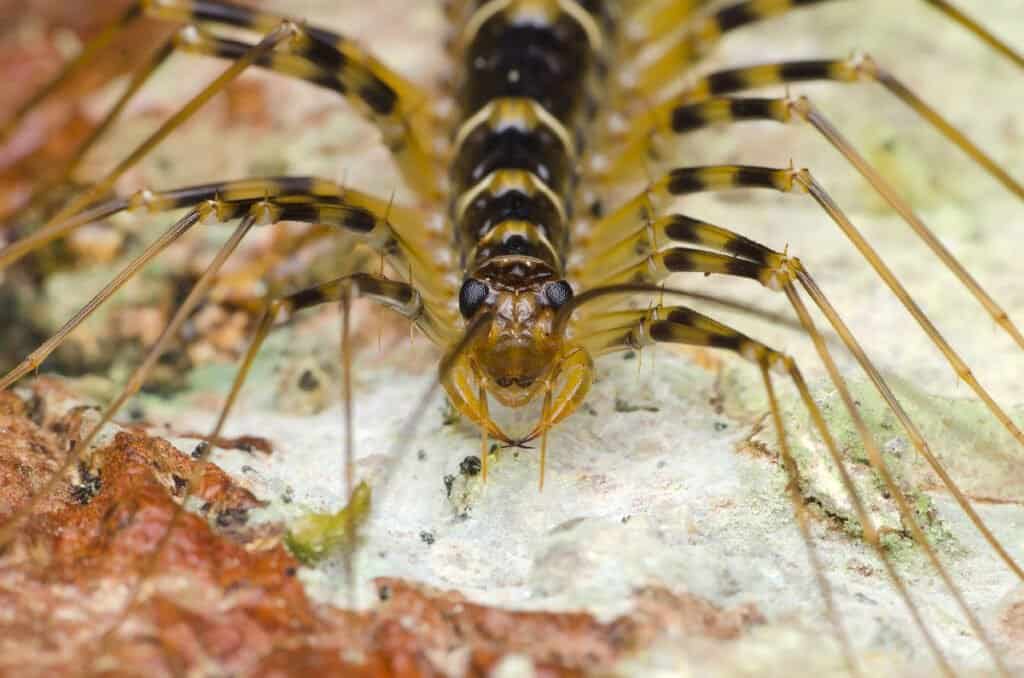
House centipedes can live their whole life indoors.
©zaidi razak/Shutterstock.com
Centipedes live in various climates and habitats throughout the world. Some live in caves or subterranean environments, while others dwell in deserts or tropical forests. You can even find some centipedes near arctic regions. By and large, they tend to prefer dark, humid habitats that offer protection, food, and access to water.
However, there is one centipede that serves as the exception to this rule. The aptly named house centipede is the centipede most commonly found indoors. Originally from the Mediterranean, it now ranges throughout much of the world. Unlike many other centipedes, which usually must spend part of their life cycle outside, it is the only known species that can live the entirety of its life indoors.
7. Centipedes Are Carnivores

All centipedes are venomous.
©ananth-tp/Shutterstock.com
Like other arthropods, centipedes are carnivores that rely on catching and feeding on prey to survive. That said, they will sometimes eat plant matter, especially when on the verge of starvation. They are generalist predators and have evolved to eat almost anything they can catch.
Centipedes usually only attack and consume animals smaller than themselves. They eat a wide variety of invertebrates, such as worms, crickets, cockroaches, and silverfish, and competitors, including spiders and other centipedes. Giant centipedes will even attack vertebrates such as baby birds and small mammals.
6. Centipedes Are Venomous
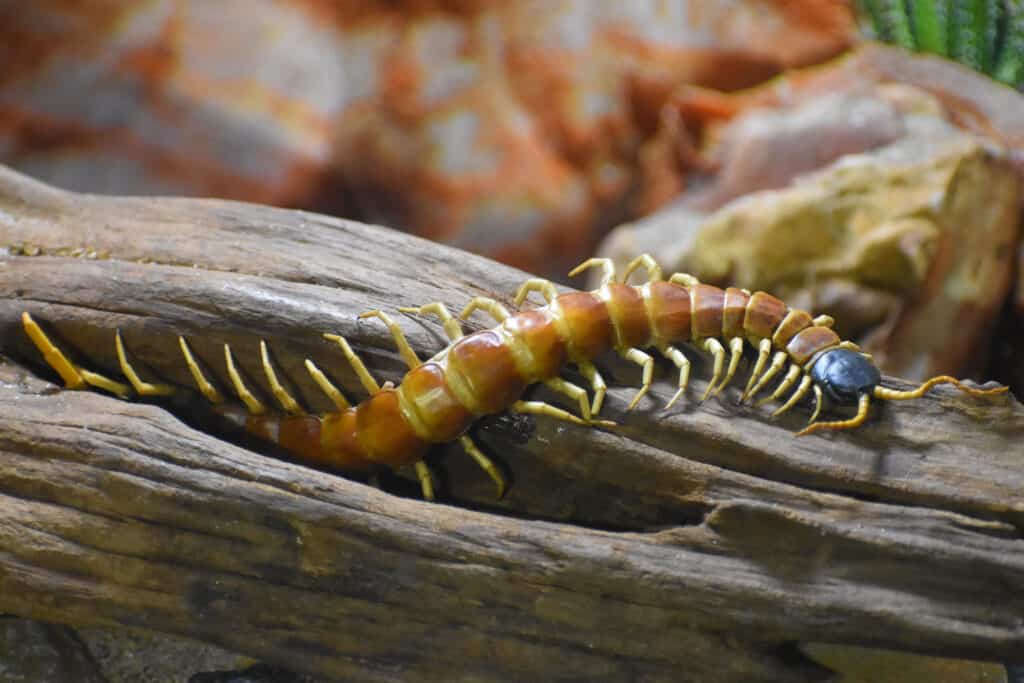
The centipede’s forcipules contain venom glands and end in sharp claws.
©Laura Ekleberry/Shutterstock.com
This next entry on our list of centipedes facts is one of the main reasons why people fear centipedes. As previously mentioned, centipedes are generalist predators who hunt at night using ambush tactics. However, the feature that makes them such dangerous predators is not their speed or stealth but rather their potent venom.
All centipedes are venomous and can inflict painful stings with pincer-shaped forelegs known as forcipules. The forcipules contain venom glands and end in sharp claws. They use these appendages to grab and then inject venom into their prey. The venom can either paralyze or kill depending on the prey’s size, making the centipede’s job easier. This is definitely one of the centipede facts that their prey wishes weren’t true.
5. Centipedes Lack a Waxy Outer Coating
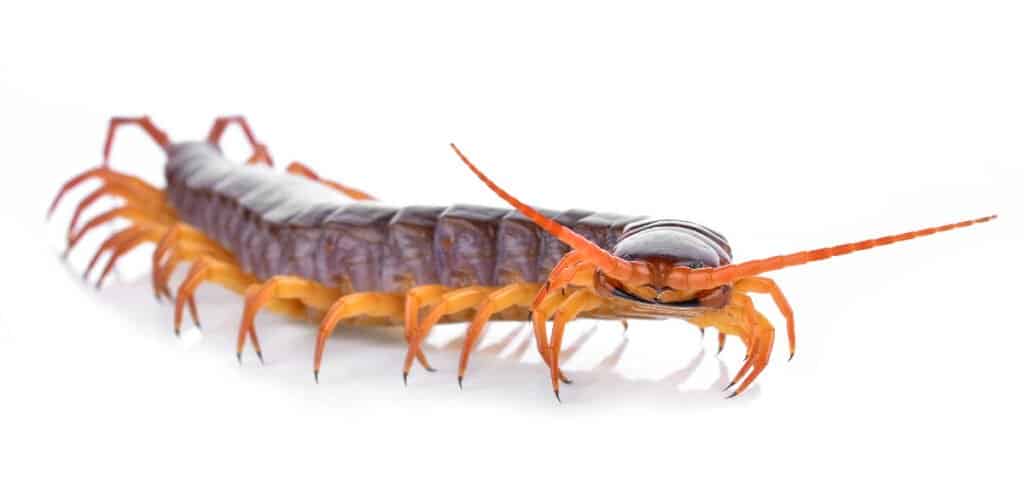
Centipedes rapidly lose water, especially in dry, arid environments.
©Mr. SUTTIPON YAKHAM/Shutterstock.com
Many insects and arachnids feature a thin waxy layer outside the cuticle that makes up the bulk of the exoskeleton. This waxy coating acts as a form of waterproof protection and also helps them to retain moisture. At first glance, centipedes also appear to have a similar waxy outer shell, but in truth, they lack this protection.
As a result, centipedes rapidly lose water, especially in dry, arid environments. To compensate, they typically dwell in moist, dark environments such as under stones, inside logs, or under the ground. Moreover, almost all centipedes are nocturnal. They hide from the hot sun during the day, then emerge at night to feed.
4. Some Female Centipedes Are Diligent Mothers
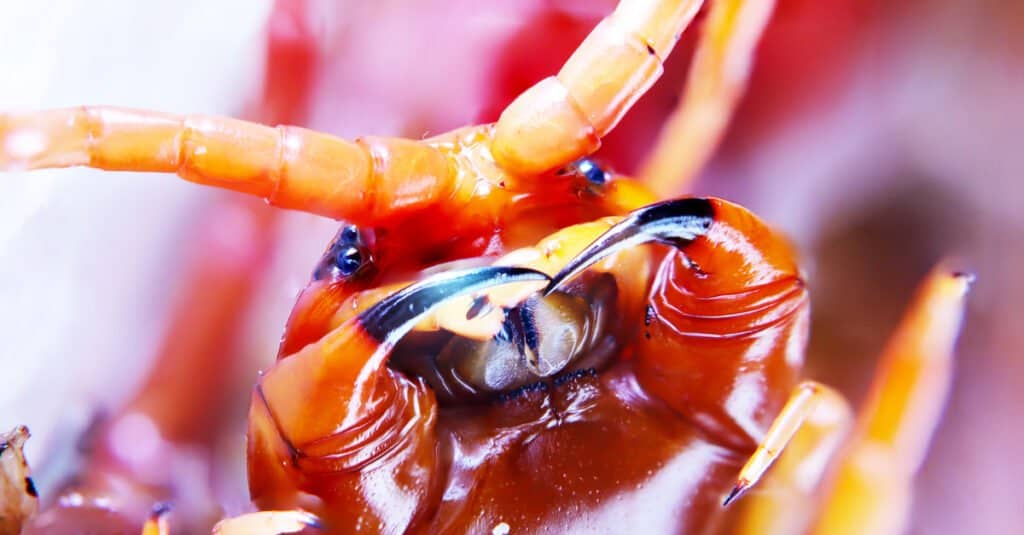
Female centipedes are protective of their offspring.
©SAYAN CHAONAMON/Shutterstock.com
Most people don’t picture insects, arachnids, and other arthropods as good parents, and this image certainly extends to centipedes. We tend to think of them as cold and calculating. As far as most people are concerned, centipedes are just as likely to eat their young as they are to raise them.
In reality, a surprising number of centipedes display what might be considered maternal instincts. While some centipedes lay eggs, others give birth to live young, and each employs different strategies to ensure the survival of their offspring. Female soil and tropical centipedes wrap their bodies around their eggs to keep them warm and protect them from predators. Some other egg-laying centipedes will lick their eggs to keep fungus and mold from growing on the eggs. A few species will continue to protect their offspring even after birth.
3. Centipedes Are Quite Agile
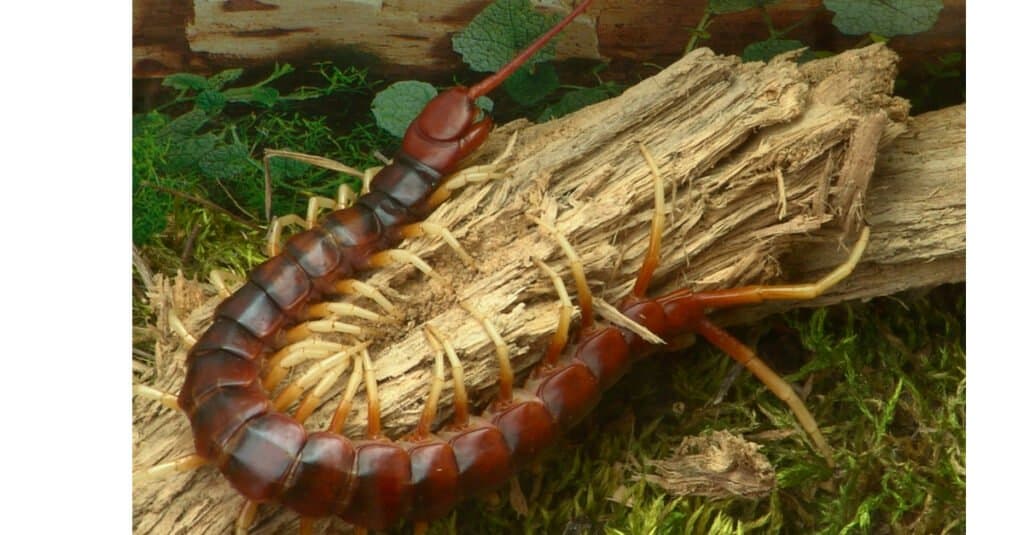
Some specimens can run at the speed of 1.3 feet per second.
©skifbook/Shutterstock.com
In addition to their venom, centipedes have one other adaptation to help them find food and protect themselves – their speed. Unlike millipedes, which move rather slowly, many centipedes can move quite quickly when necessary.
For example, the house centipede can move around 1.3 feet per second. The typical adult specimen measures around 1 inch long so an average house centipede can sprint around 10 body lengths per second. This is the equivalent of a person running around 60 feet per second or 41 miles per hour. Talk about quick centipede facts!
2. Some People Keep Centipedes as Pets
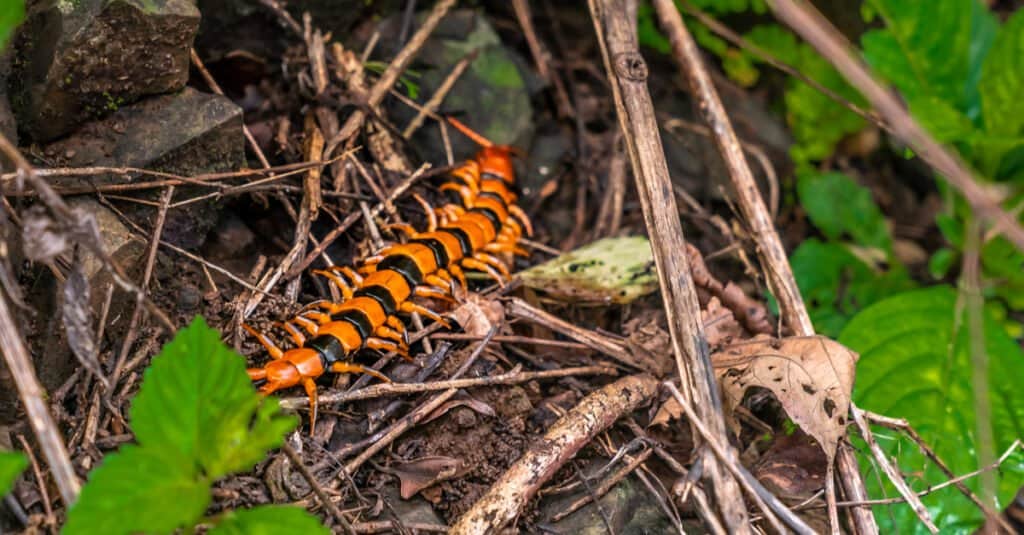
Some people enjoy keeping myriapods as pets.
©iStock.com/Augustine Fernandes
Keeping centipedes as pets is not common, but neither is it rare. Those who decide to keep centipedes as pets recognize that they are fascinating creatures but require specialized care. Generally speaking, only people who are well acquainted with keeping exotic pets and insects should consider raising a centipede due to their special handling requirements.
Like other venomous animals, centipedes must be kept in secure enclosures and handled with care. If pet owners know what they’re doing, then centipedes can provide hours of enjoyment. On the other hand, they can easily prove dangerous if kept by an inexperienced owner.
1. Some Centipedes Pose Hazardous to Humans
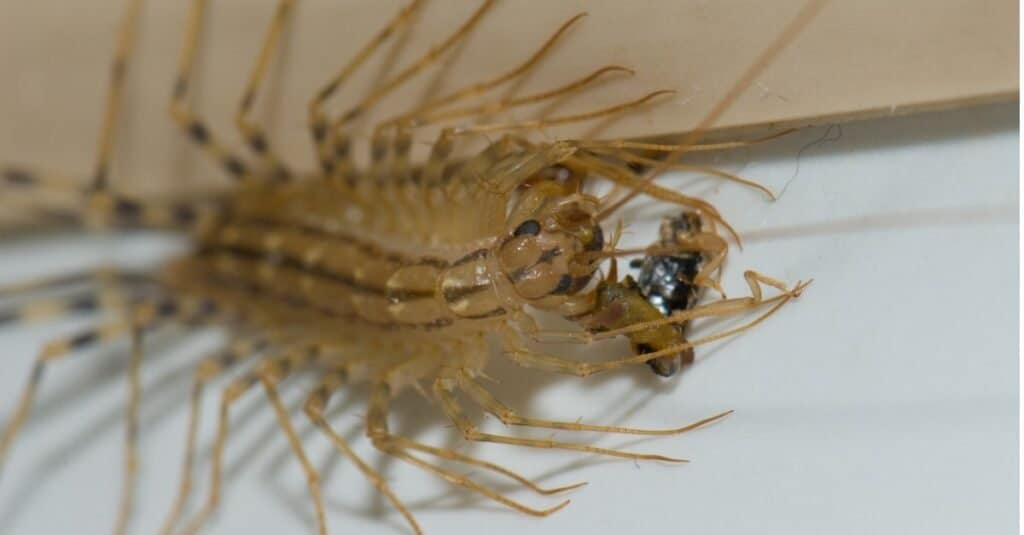
Be careful when handling exotic pets.
©iStock.com/Víctor Suárez Naranjo
The last entry on this list of centipede facts is also likely the most important. As you well know by now, all centipedes are venomous. While their venom is usually only dangerous to other invertebrates and small vertebrates, that does not mean they are harmless to humans.
Centipede bites can be quite painful, and the pain may last several days. In addition to pain, some individuals may be allergic to centipede venom, and these individuals may go into anaphylactic shock if bitten. Moreover, children and very sick or older adults are also at additional risk, so you should always be careful around centipedes and handle them with care.
The photo featured at the top of this post is © Scott Delony/Shutterstock.com
Thank you for reading! Have some feedback for us? Contact the AZ Animals editorial team.



